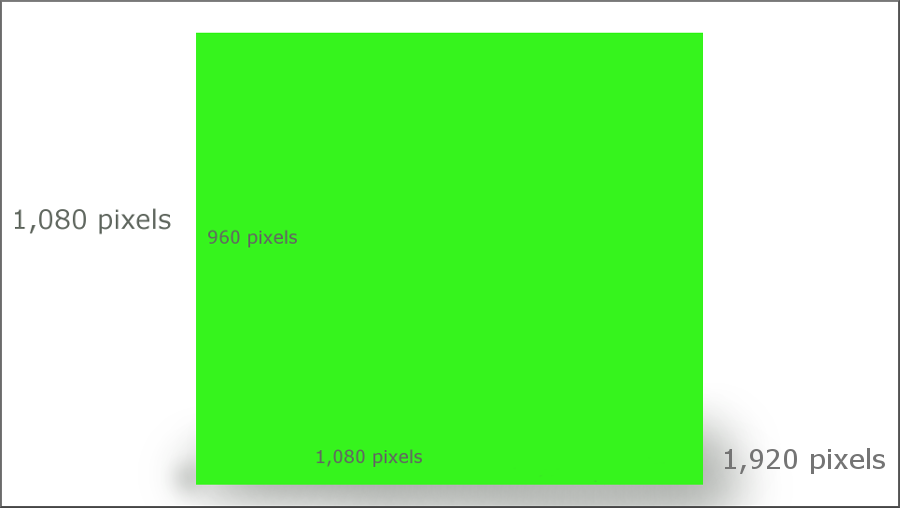How Formats Get Made
1080P Explained
1080N Explained
1080P and 1080N Differences
Practical Uses for 1080N
Do They Make 1080N TV’s?
Conclusion
There’s a New Format For Your DVR – 1080N
What does 1080N do?
Its All Simplified Below…
If you make it to this point in the article, you have some drive behind the research your doing regarding video resolutions…specifically 1080P which may be very familiar to you, and 1080N which may be a complete mystery to you. So lets get started pulling this apart and learning.
So, we have heard of 720P. We’ve heard of 1080P. Maybe you’ve heard talk of 1080i. Well now we are hearing about 1080N. What’s the ‘N’ stand for? This article highlights what exactly is the difference between 1080P and 1080N video formats, even the ‘N’ identifier. Why should you even be interested in this format?
Best Prices Online for 1080N NVR Systems.
Magic HD Pixel Dust
To get up to speed, when discussing video formats and aspect ratios, we are primarily talking about pixels. These are the smallest element on a monitors viewing screen or TV screen. This electronic element can be controlled as results in varying light and color. When combined into a large panel sized array, together they create the overall image we see. So as you have probably guessed, 1080P is one thousand eighty pixels. So is that wide or tall? How can we be sure? Now we investigate the concept of an aspect ratio.
HD Aspect Ratios
A monitor’s screen uses different formats from frame rates to raster formats. All monitors have an Aspect Ratio. In the not so distant past most televisions were square shaped, glass CRT screens. These TVs used 4:3 aspect ratios. That is mathematically equal to 4 pixels wide for every 3 pixels tall. CRT’s work on a different principle. There is a horizontal and vertical frequency; the higher the frequency the more pixels you can fit on a line.
PAL has a frame rate of 25Hz. Maximum resolution you can see on a 4:3 screen is in the order 800 x 600. NTSC (National Television Standards Committee) is the oldest existing standard, developed in the USA in 1954. It’s parameters are as follows:
- Lines: 625
- Frame rate: 29.97 Hz
- Picture resolutions: 720 x 480; 704 x 480; 352 x 480; 352 x 240
We don’t use measurement of the actual screen, its a pixel count now days, unless you are talking about the size of the chassis(example: 55″ TV).
Remember for non-wide screen the measurement is diagonal across the screen. With wide screen monitors the dimensions are actually width and height. 4:3 is a fraction. A ratio. So if the screen was 16 inches by 12 inches tall that equals 16/12 or 4/3 most commonly written as 4:3.
Then slowly many of us upgraded to a flat screen TV. But the flat screens are no longer square they are long rectangles. This is all because of aspect ratios and how they relate to a better picture definition. For example there are many 36″ TVs, some are 720P, some are 1080P, some now are 4K or 8K UHD but the screen doesn’t get any larger. So its the pixel count that important, and not the dimensions.
A wide screen video uses the ratio of 16:9. Now that we know what’s going on let’s do some math. Note that when discussing aspect ratio in HD or UHD, the rating number (720P,1080P…ect.) refers to the vertical dimension. So if we take:
| 1080/9= 120 |
| Now take |
| 120*16 = 1920 |
So a 1080P screen will be 1920 pixels wide and 1080 pixels tall.
Who Makes These Formats?
Broadcasting standards are set into applicable law according to the Advanced Television Systems Committee (ATSC). All earth bound signals, cable TV , and satellite TV networks must comply with these standard as to remain in business as a broadcaster. The ATSC was conceived in 1992. ATSC standards were developed in the 1990s by a united group of major electronics and telecommunications companies.
They call themselves…The Grand Alliance, and they essentially create what we know as the HDTV formats. 480i,720P, 1080P and so on. The Grand Alliance is made up of the worlds top electronic manufactures like AT&T Corporation, Massachusetts Institute of Technology (MIT), Philips Consumer Electronics, and the David Sarnoff Research Center are some of the executive members of the assembly.
The GA was as started in 1993 from the actions of the Federal Communications Commission (FCC). Grand Alliance digital television (DTV) system is the foundation for the ATSC standards we use today. Amusingly, the audio formats were not finalized at the same time because other groups and government agencies just didn’t get it together in time.
As of today, the ATSC overlook electronic devices and how the software processes data into the correct formats we use for our TV’s and monitors. Modern modulation methods are directed to achieve proper performance from the transmitted data. They regulate tuners, receivers, digital satellite transmission, digital subscription transmission, and even IPTV transmissions.
What is 1080P Resolution?
As mentioned above, TVs have tiny segments called pixels. Its the smallest unit a screen can manipulate. When we say 1080P, it is a pixel count. The vertical count would be one thousand and eighty.  This image of the bridge is 1080 pixels tall by 1920 pixels wide. This computer screen is scaling it for viewing though. Wide screen monitors use the aspect ratio of 16:9. A screen 1080 pixels tall would be 1920 pixels wide. There are other dimensions such as 480I and 720P and these are just pixel counts as well.
This image of the bridge is 1080 pixels tall by 1920 pixels wide. This computer screen is scaling it for viewing though. Wide screen monitors use the aspect ratio of 16:9. A screen 1080 pixels tall would be 1920 pixels wide. There are other dimensions such as 480I and 720P and these are just pixel counts as well.
As a side note, the ‘P’ or ‘i’ or even ‘N’ declares the type of method the resolution uses to render an image. P means a “progressive” type of scan. Serving each row of pixels one after the next all the way down the screen. The benefit of ‘progressive’ scanning resides in the speed of the data rate. Placing one line at a time with compression on the file will lighten the load on the communication bandwidth.
What is 1080N Resolution?
Now let’s go over another pixel count, 1080N. Ok, we have some knowledge about what this may mean. It is one thousand and eight pixels tall, right? Umm…no. This gets turned on its side, literally.  This new format uses 1080 pixels as the width structure and now the height becomes a new count of 960 pixels. Where does 960 come from? We can see that dividing:
This new format uses 1080 pixels as the width structure and now the height becomes a new count of 960 pixels. Where does 960 come from? We can see that dividing:
| 1920 / 2 = 960 |
The width from 1080P is cut in half and now it is the height dimension. This brings the ratio to a interesting 9:8. Altering the dimensions of the picture while retaining the 1080 pixel count give high quality HD video with half the data demand. There is no stretching or squeezing it is simply a squared version of an HD format you’ve come to know… and …love.
Why do this? View two feeds in the space of one. Place 4 in the place of two. And so on. Layout becomes simple with a 16:9 wide screen television.
1080N is most practical in home security systems. You won’t find devices for mobile, or HD SLR cameras with 1080N built-in. It is generally a security DVR feature that gives the user more control over recording storage and playback on a home monitor. It has its uses as does 1080P. Security cameras will come as 720P, 960H, 1080P, 4K and so on. The DVR is the processor that converts camera image to the format 1080N.
What Does the ‘N’ Stand For In 1080N?
The ‘N’ stands for “native“. As progressive scanning places the entire frame down one by one , native will push a whole image after whole image. This combines the entire video frame as one piece. Each frame or piece of video comes one total chunk after the other. The down side of ‘native’ scanning is the massive data dumps that occurs when chunking frame after frame. This can slow the network communication possibly affecting other device’s demands from the same network.
Difference Between 1080P and 1080N

How are the two different? We can see they both have a 1080 pixel dimensional length in common. See the image above. It is an overlay containing both 1080N and 1080P elements. The perimeter is the larger 1080P. So they share the 1080 dimension, 1080P uses this as the height, and the 1080N uses that dimension for the width. That is really the only relative occurrence between the two formats. As you can see in the image above, much of the surrounding detail is lost in the 1080N format. This may be alright if you have determined the correct view point to place a security camera so as not to lose the subject matter in the frame. A street view from a driveway may not behave as you would wish due to this loss.
The second most obvious difference is the ‘P’ and ‘N’ suffixes. As stated earlier, the ‘P’ denotes a ‘progressive’ picture creation method. This draws each line or row of pixels one at a time, one after the other. Doing so will reduce data rate demand and give smooth image motion on the screen. Thus it why we use this protocol so much in everyday life.
Now the ‘N’ means ‘native’ or another way to look at it is the ‘natural’ protocol. This modulation method takes all the frame image data and chucks it down the line all at once. It does chunk after chunk and as a result it has a high demand on data flow and network volume. It can result in choppy, pixel-missing image motion. You should have a good Wi-Fi 5 or better yet Wi-Fi 6 network connection when choosing this format in an NVR.
Practical Uses
Twice the Coverage- Putting the slice on a Full HD 1080P media will decrease the needed screen space giving way for two camera signals to display where one full-screen signal occupied.
Array Monitor Layout- Put two together or increase to 8 or 16 or more. The layout will divide nicely on a 16:9 screen.
Home Security- The overall goal is for a secure home for you and your family by adding a DVR no matter what the format. 1080N allows layout benefits due to the size of the frame. Graphical User Interfaces can control settings related to 1080N resolution and recording modes. Read your user manual for more information to dive into.
Sharp DVR Playback- It brings all the HD goodness you come to expect from today’s top electronics. You expect a lot from outdoor equipment. The 1080N format will let you digitally zoom in with rich detail.
Do They Make 1080N TVs?
You Can Watch 1080N Video
No there aren’t TVs specific to 1080N pixel count or frame rate. Only DVRs are made to perform in 1080N as a network recorder. Many of today’s top rated televisions are capable of displaying most frame sizes and aspect ratios. These may not fit the exact chassis screen so the DSP modulates the picture into the relative size and definition. The format of 1080N is easily converted to display correctly as will 480i, 720P and so on. There are many Full HD 1080P TV’s on the market. This will continue until the ATSC 3.0 formats come alone.
Next we may have the 1440P format. Now if you read this article carefully, you will know what this means. If it uses the aspect ratio of 16:9 then the pixel dimensions will be 2560×1440 pixels. That is getting above the format of 2K. 4K is slow to get going as there is not very much content to drive the market for consumers to run out and upgrade. But day by day, more content is published and we may all soon have 8K as the norm.
Guaranteed Best Prices on 1080N NVR Security Systems.
Final Thoughts
Got DVR Resources?
When selecting a home security system, it can be overwhelming to choose just the right one. Specs with cameras and specs with the DVRs and so on. Take a moment to list your needs and what you can offer. High resolution cameras for great zooming detail needed? Or is it a close view placement where your already so close zoom isn’t needed. List things you need in the cameras, things you need in the DVR functions, and you can drill down to a great solution for your home security needs.
Also does your home WiFi have fast speed and good bandwidth? List the things that can affect the performance of a system you are interested in and go from there. Thanks for reading. Visit CameraSecurityReviews.com for more great info and products.
To the Future
Now we know a bit of what 1080N is made of and how it is used. So does it matter?  It will be irrelevant in about 2 years anyhow. The cards and maps have been already arranged to lead us all to the larger frame rates such as 1440P. But it won’t stop there. Everyone knows products get replaced with the latest and greatest incarnation.
It will be irrelevant in about 2 years anyhow. The cards and maps have been already arranged to lead us all to the larger frame rates such as 1440P. But it won’t stop there. Everyone knows products get replaced with the latest and greatest incarnation.
So it should be no surprise that 1080N will obsolete soon and a great version will be here. Don’t worry we will cover that we it comes. So we can all know a little bit more about our electronics world. Again, thanks for reading.

